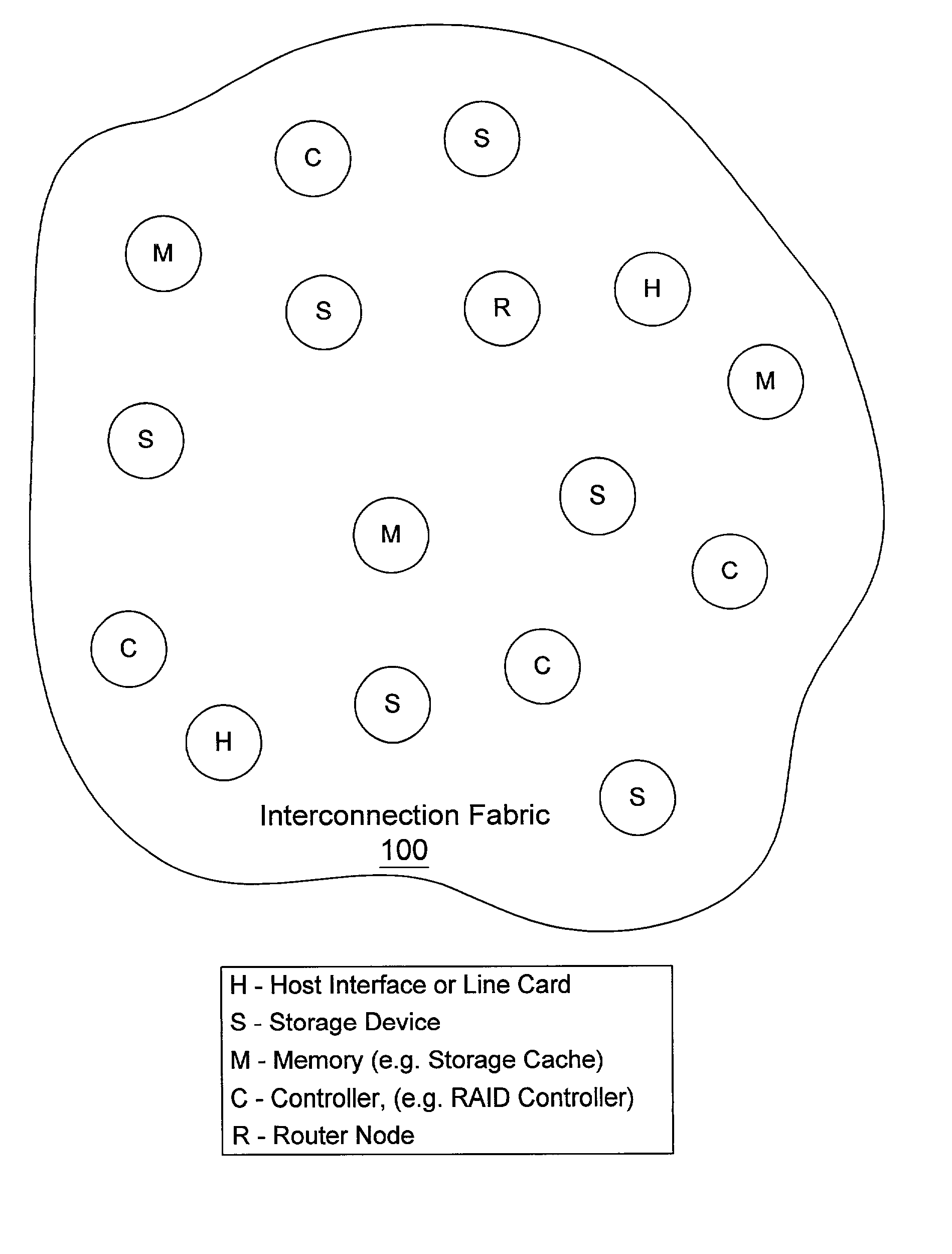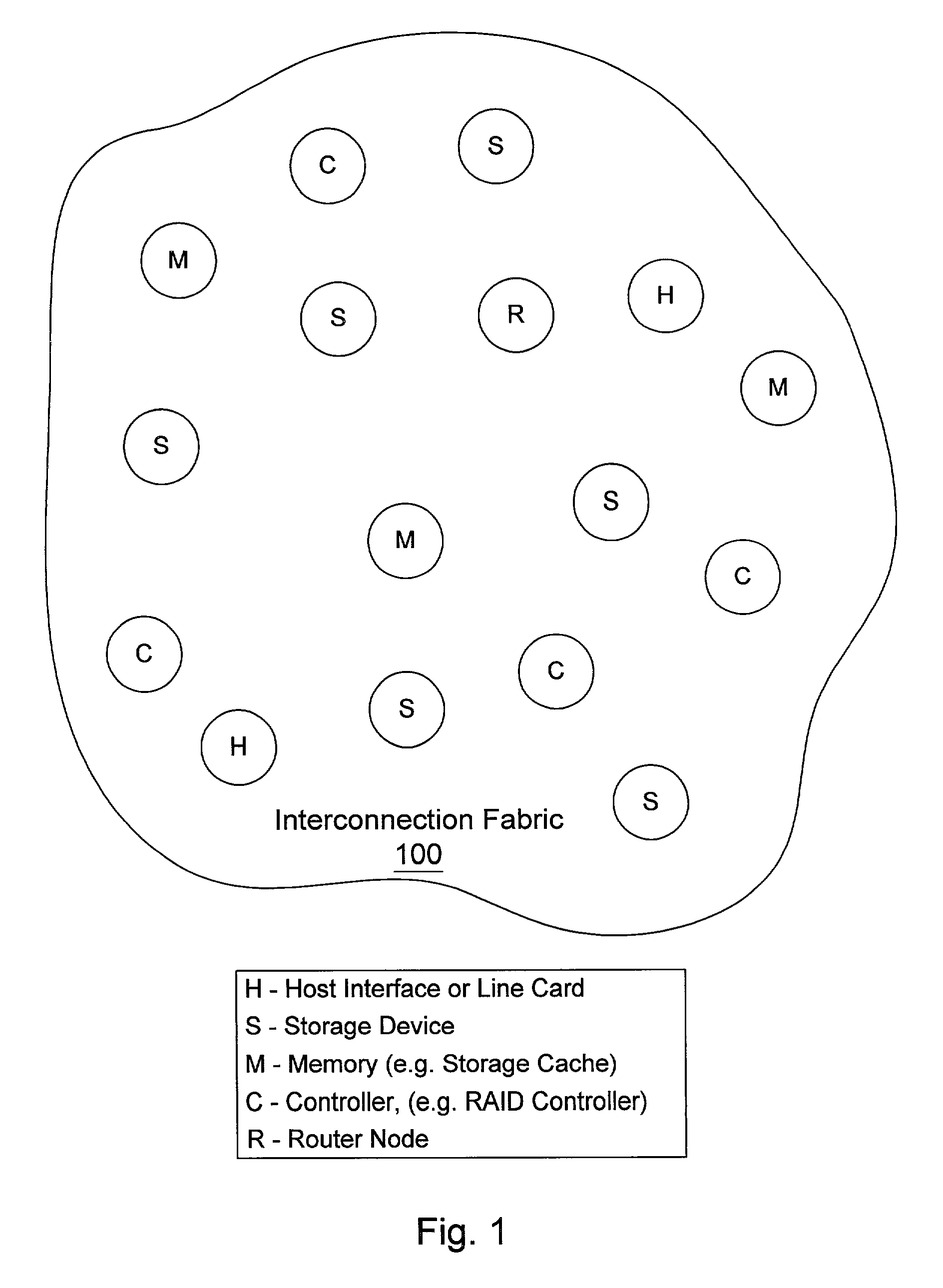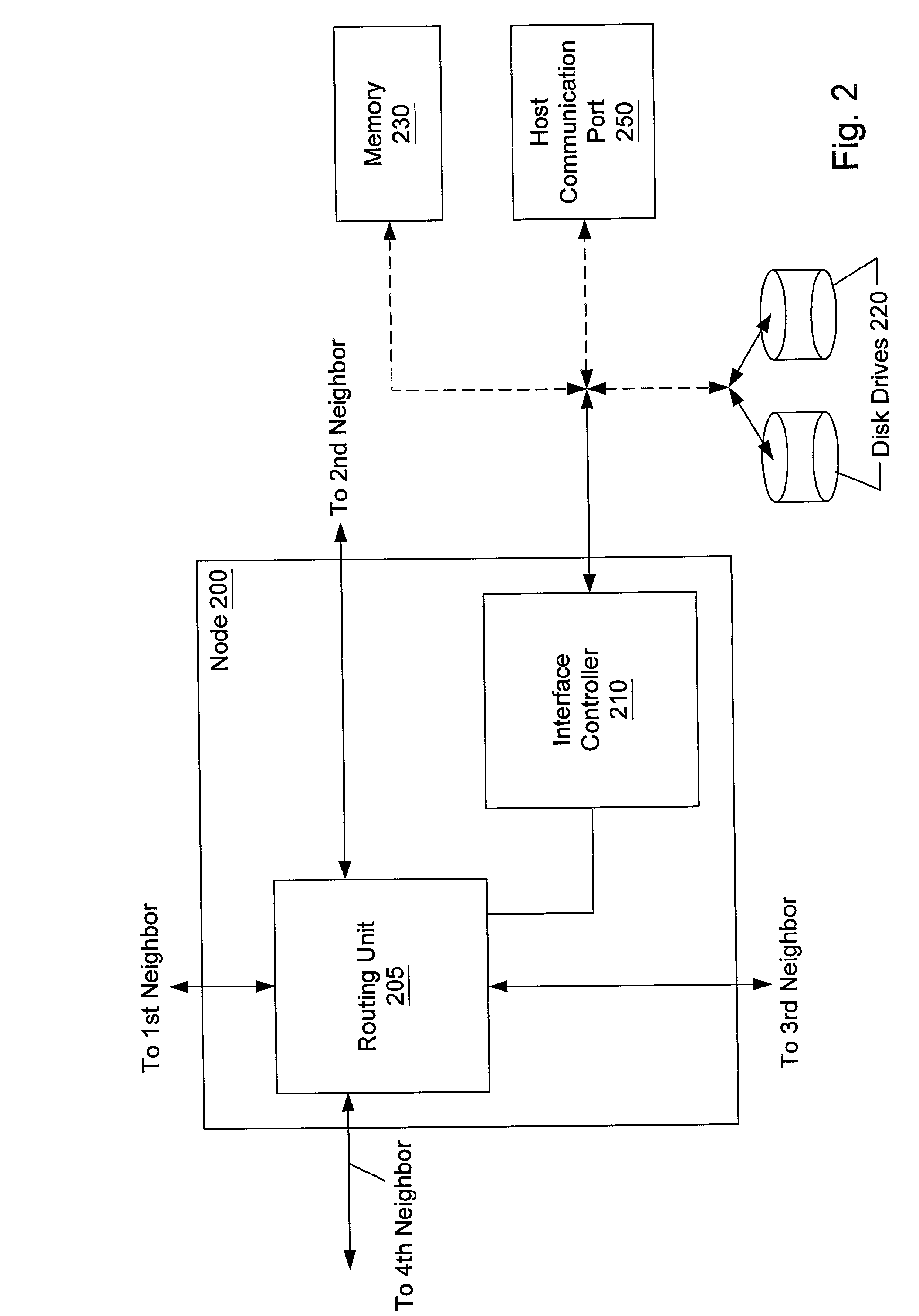Fault-tolerant routing scheme for a multi-path interconnection fabric in a storage network
a storage network and multi-path technology, applied in the field of computer systems, can solve the problems of affecting the performance of the architecture, affecting the reliability of the storage network, and affecting the reliability of the storage network, and causing the expected frequency of component failures,
- Summary
- Abstract
- Description
- Claims
- Application Information
AI Technical Summary
Problems solved by technology
Method used
Image
Examples
Embodiment Construction
[0039] The following figures illustrate various interconnection fabrics and nodes within interconnection fabrics that may use a routing scheme according to various embodiments of the invention. While various embodiments are explained by reference to specific interconnection fabrics, it should be readily apparent to one skilled in the art that embodiments of the present invention could be implemented in any multi-path interconnection fabric or topology.
[0040] Turning now to FIG. 1, a diagram of one embodiment of an interconnection fabric using multiple independent paths is shown. An interconnection fabric 100 is shown with several nodes. Each node may support one or more different types of devices in a storage system. The nodes are labeled with the letters C, H, M, R and S. A node with the letter C means the node may be configured to support a controller such as a Redundant Array of Inexpensive Disks (RAID) controller. A node with the letter H means the node may be configured with a ...
PUM
 Login to View More
Login to View More Abstract
Description
Claims
Application Information
 Login to View More
Login to View More - R&D
- Intellectual Property
- Life Sciences
- Materials
- Tech Scout
- Unparalleled Data Quality
- Higher Quality Content
- 60% Fewer Hallucinations
Browse by: Latest US Patents, China's latest patents, Technical Efficacy Thesaurus, Application Domain, Technology Topic, Popular Technical Reports.
© 2025 PatSnap. All rights reserved.Legal|Privacy policy|Modern Slavery Act Transparency Statement|Sitemap|About US| Contact US: help@patsnap.com



